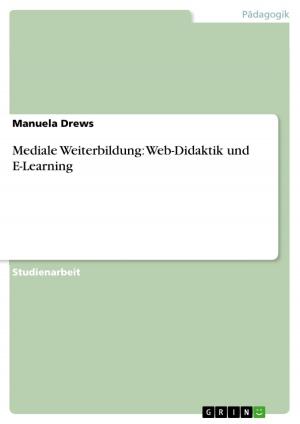10 Ways to Fund a College Education Without Giving Up Your Retirement
How to pay for your child's - or grandchild's - college education
Nonfiction, Family & Relationships, Education| Author: | H. Roger Daisley | ISBN: | 9780578088648 |
| Publisher: | Blue Horizon Books | Publication: | August 1, 2012 |
| Imprint: | Language: | English |
| Author: | H. Roger Daisley |
| ISBN: | 9780578088648 |
| Publisher: | Blue Horizon Books |
| Publication: | August 1, 2012 |
| Imprint: | |
| Language: | English |
Figuring out how to finance your child's - or grandchild's - college education is a time-consuming process. You need to do lots of research long before the child is ready to even think about choosing a college, and you need to take into account your retirement plans as well. It is not only a time-consuming process, but it involves very significant decisions. Higher education may be one of the highest expenses you will have to incur in your entire life. So, obviously, it is a topic that deserves your time and your focus, and this book will help you cut through the confusing thicket of information to the most essential facts you need to know. As the author, Roger Daisley, observes, many people spend more time planning a two-week vacation than they spend in their entire lifetime planning their own financial future, including significant financial events such as the cost of a good education. And yet, planning for a child's education is not an isolated incidence of financial planning, just as investment plans are not complete financial plans, nor is tax planning or mortgage or other loan planning a complete financial plan, in and of itself. The author's point is: When you are planning how to fund your child's - or grandchild's - education you will want to take all sorts of other, seemingly related, factors into account and make sure your plans are coordinated. It is important to have an overall plan, and to take enough time to do it right. The costs to pay for a child's college education can vary significantly - from almost half a million dollars to attend an Ivy League or elite private school, to tens of thousands for state universities. Ironically, you may very well find that the expensive private school will cost you less out of pocket than the much cheaper state school. This is because private schools tend to give out more financial aid dollars - and that is because they are almost always much better funded than state schools. Another consideration is the fact that at private schools, the percentage of students that graduate in four years is significantly higher than students at state schools. There are many ways to save and pay for your children's - or grandchildren's - education. And many have some favorable tax ramifications. The author's focus in this book is on 10 key methods, some of which are well-known and a few that are frequently overlooked: 1. Scholarships and Financial Aid2 2. 529 Plans 3. College Education Savings Accounts (ESAs) 4. IRAs and 401(k)s 5. U.S. Savings Bonds 6. Uniform Gift to Minors/Uniform Trust to Minors (UGMA/UTMA) 7. Income and Accumulation Trusts: 2503(b) and 2503(c) 8. Hope/American Opportunity and Lifetime Learning Tax Credits2 9. Tax Techniques to Help Educational Funding2 10. Life Insurance Options Some of these may be familiar. But it's very likely that readers haven't thought of all of these methods before now. For instance, various tax advantaged vehicles, including life insurance, seem to be overlooked as college funding options. Use this book to consider all possible options and how they may apply to you and your family. But, as the Daisley cautions, be sure to review your options with a knowledgeable financial professional prior to choosing one, or even several, accumulation plans because regulations and tax laws change.
Figuring out how to finance your child's - or grandchild's - college education is a time-consuming process. You need to do lots of research long before the child is ready to even think about choosing a college, and you need to take into account your retirement plans as well. It is not only a time-consuming process, but it involves very significant decisions. Higher education may be one of the highest expenses you will have to incur in your entire life. So, obviously, it is a topic that deserves your time and your focus, and this book will help you cut through the confusing thicket of information to the most essential facts you need to know. As the author, Roger Daisley, observes, many people spend more time planning a two-week vacation than they spend in their entire lifetime planning their own financial future, including significant financial events such as the cost of a good education. And yet, planning for a child's education is not an isolated incidence of financial planning, just as investment plans are not complete financial plans, nor is tax planning or mortgage or other loan planning a complete financial plan, in and of itself. The author's point is: When you are planning how to fund your child's - or grandchild's - education you will want to take all sorts of other, seemingly related, factors into account and make sure your plans are coordinated. It is important to have an overall plan, and to take enough time to do it right. The costs to pay for a child's college education can vary significantly - from almost half a million dollars to attend an Ivy League or elite private school, to tens of thousands for state universities. Ironically, you may very well find that the expensive private school will cost you less out of pocket than the much cheaper state school. This is because private schools tend to give out more financial aid dollars - and that is because they are almost always much better funded than state schools. Another consideration is the fact that at private schools, the percentage of students that graduate in four years is significantly higher than students at state schools. There are many ways to save and pay for your children's - or grandchildren's - education. And many have some favorable tax ramifications. The author's focus in this book is on 10 key methods, some of which are well-known and a few that are frequently overlooked: 1. Scholarships and Financial Aid2 2. 529 Plans 3. College Education Savings Accounts (ESAs) 4. IRAs and 401(k)s 5. U.S. Savings Bonds 6. Uniform Gift to Minors/Uniform Trust to Minors (UGMA/UTMA) 7. Income and Accumulation Trusts: 2503(b) and 2503(c) 8. Hope/American Opportunity and Lifetime Learning Tax Credits2 9. Tax Techniques to Help Educational Funding2 10. Life Insurance Options Some of these may be familiar. But it's very likely that readers haven't thought of all of these methods before now. For instance, various tax advantaged vehicles, including life insurance, seem to be overlooked as college funding options. Use this book to consider all possible options and how they may apply to you and your family. But, as the Daisley cautions, be sure to review your options with a knowledgeable financial professional prior to choosing one, or even several, accumulation plans because regulations and tax laws change.















